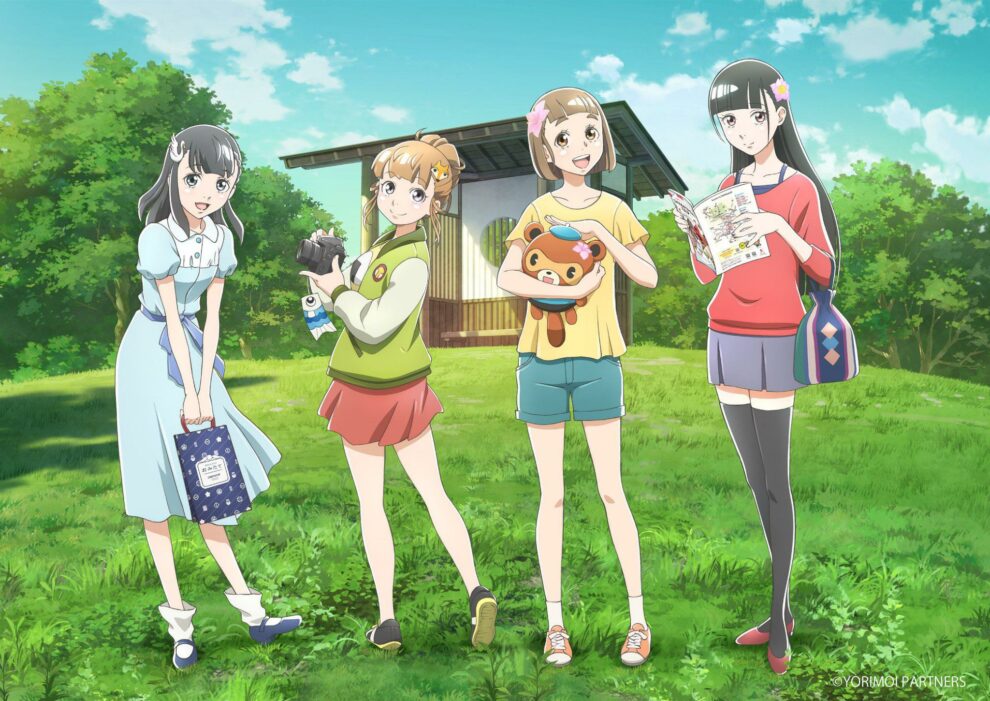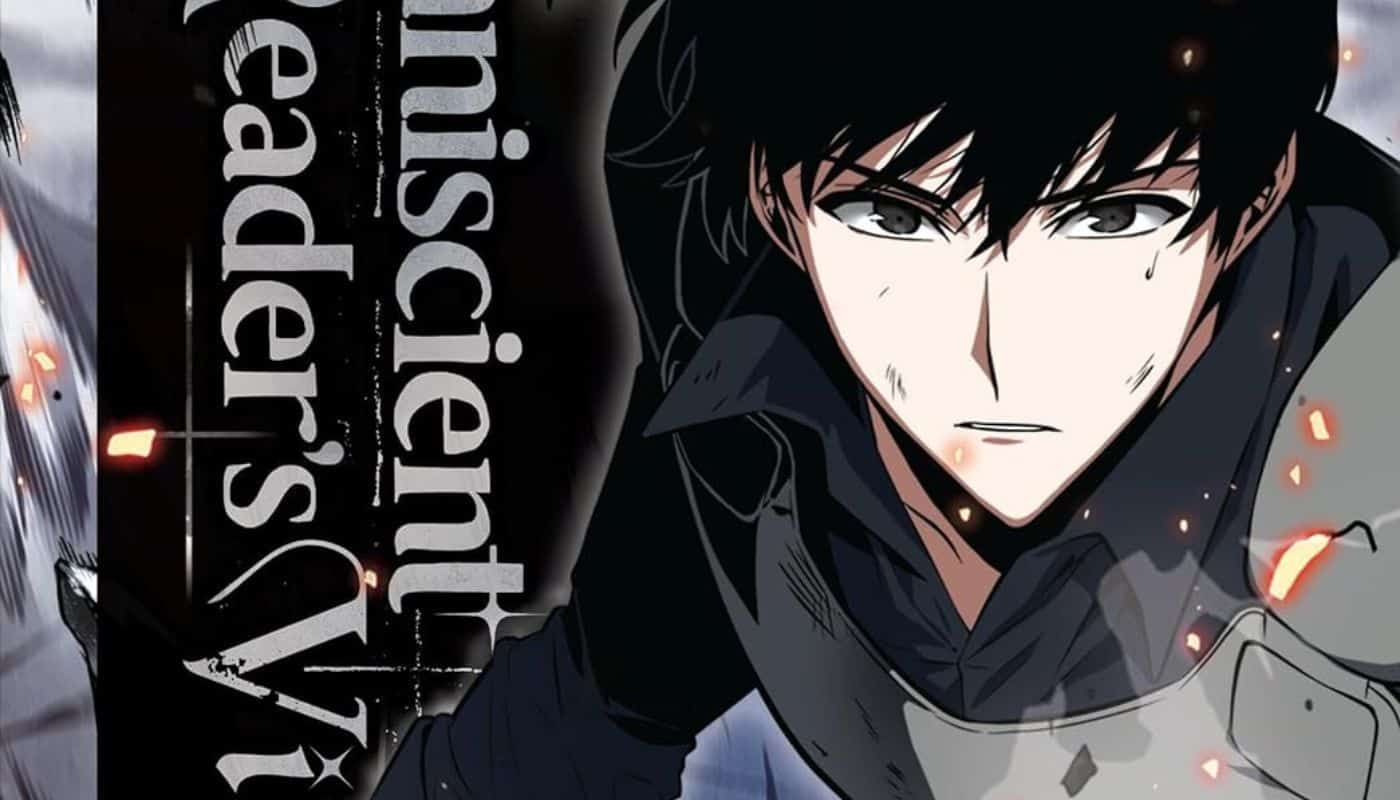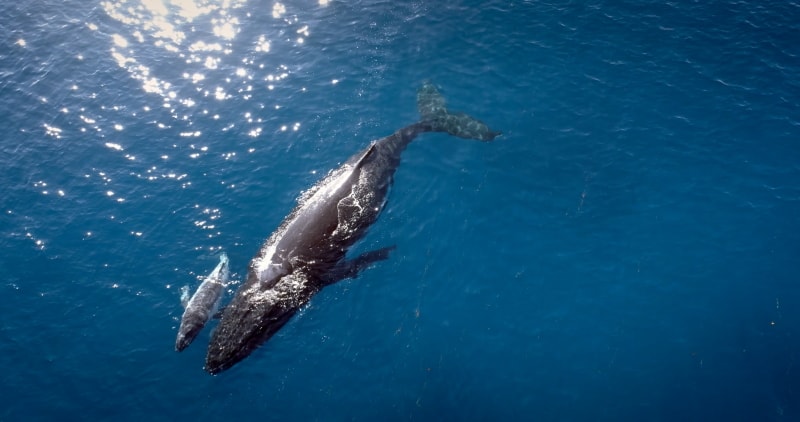by Sarah Miles
There's a particular challenge that original anime face in that, unlike manga adaptations, they don't have a built-in audience and fanbase. Therefore, sometimes it can take a while for them to gain some momentum in the anime community. When “A Place Further than the Universe” first aired in 2018 there were many who dismissed it as another “cute girls doing cute things” show that had little to offer beyond mildly humorous antics. Those who gave the show a proper chance, however, found a deeply affecting coming of age comedy-drama from a creative team at the top of their game with plenty of emotional catharsis and heart-warming growth.
Watch This Title on Crunchyroll
by clicking on the image below
Mari Tamaki, or “Kimari” to her friends, is faced with the fact that she has little to show for her youth. In her second year of high school, she talks herself out of taking risks and instead clings to her best friend Megumi. After a chance encounter (and a million yen) she meets Shirase Kobuchizawa, a strange girl with an even stranger dream: to go to Antarctica. Enthralled by Shirase's determination in the face of overwhelming doubt, Mari resolves to help her reach that goal even if it means going to Antartica herself. They are joined in their efforts by Hinata Miyake, a happy go lucky school dropout who Mari meets at her part time job.
The trio make plans to accompany a civilian expedition, one that Shirase's mother had previously been a part of and disappeared on. When they are rejected and it seems like their goals are truly unobtainable, they are approached by teen celebrity Yuzuki Shiraishi who is part of the expedition. Together the four face the challenges and joys that come with going where no cute girls have gone before: to the bottom of the world.
In the first episode, Mari muses on her childhood fascination with watching water collected in pools spill out as “the energy stored up during its stagnation bursts forth”. That is in essence what “A Place Further than the Universe” is about; the feeling of exhilaration of achieving something after being held in place for so long. For one reason or another, these girls have been stuck in their lives, and they come together as virtually being strangers, to make this seemingly impossible thing happen. Watching the bond between the four is a delight , as well as being constantly humorous throughout. It's just great to spend time with these characters, and a lot of that is down to how writer Jukki Hanada and director Atsuko Ishizuka have made these girls more than just simple comedic clichés.
Mari is the ditzy airhead but she's the glue of the group. Shirase is determined on her goal but is also awkward and naive. Hinata is laid back and goofy but has an emotional maturity beyond the others. And Yuzuki is a teen celebrity but has a blunt personality very much at odds with her career. They also all have their own reasons for going to Antarctica; Mari wants to do something with her youth, Shirase wants to find her mother, Hinata is like Mari in wanting to do something big, and whilst Yuzuki is there as a job, there is also the possibility for her of being able to have a group of friends and get to experience a normality so denied to her as a child star. Yet, as the series goes on, those separate goals become something else; to do whatever they do together.
This emphasis on strong characters extends to the supporting cast as well. Even Megumi, Mari's best friend, has a lot more going on as the possibility of Kimari going to Antarctica really makes her confront both the dynamics of their relationship and how she feels about herself. The adult characters are something that could easily fade into the background of a show like this, but whilst not as developed as the main cast, you get an impression of their own struggles and realize that their determination to do this is just as strong as the girls for their own reasons. Of the adults, expedition leader Gin Tendo has the most development, having been a friend of Shirase's mother Takako and having a sense of distance towards Shirase out of a sense of guilt.
Whilst there is a lot of fun to be had, the show never shies away from the practical problems facing this kind of expedition. Many times the lack of budget and personnel is brought up, and it's obvious that the crew have faced many trials just to get to this point. The girls go for a training exercise in navigation and orienteering, and the importance of safety and physical preparedness is emphasized several times. Then there is the matter of Shirase's mother, who disappeared on the previous expedition. You know, logically, that there is no way Shirase's mother could be out there. It's obvious. Yet after spending so much time with these girls, there is a part of you that can't help but hope.
The central cast are all great, with Kana Hanazawa as Shirase being a particular highlight as she shoulders much of emotional weight of the story. Mamiko Noto as Expedition Leader Gin Tendo also deserves a mention in many scenes, particularly those with Shirase, where it is more about what is unsaid. That is something which might seem odd to say about a vocal performance but there is a quality in the way she says the dialogue that speaks of things she wants to express but can't.
As a work from Madhouse, the studio responsible for some all-time favourites like “Death Note” (2006), “Hunter X Hunter” (2011), and more recently “Frieren: Beyond Journey's End” (2023) as well as their collaborations with Satoshi Kon, frankly it would have been more of note if it hadn't been well-made. The character designs by Takahiro Yoshimatsu are wonderfully soft yet expressive with an almost pastel colour scheme to then. Yet they never stick out awkwardly against the gorgeous backgrounds by Akihiro Hirasawa. Every environment feels real and vibrant, particularly the dazzling view we get of Singapore in episode six. Even when we move to more basic settings such as the boat or Antarctica itself, the scenery never feels boring or repetitive. This is helped by little touches like the slight rocking motion when they're on the ship. There's also often something happening in the background, some little moment or a written sign or something that highlights the action in the foreground. It's a great attention to detail and brings scenes to life.
Whilst Yoshiaki Fujisawa's score makes for a strong emotional backbone that is never intrusive, the insert songs are a real treat. They serve to really drive home some of the big emotional moments, with a great early example being the chase through Shibuya in episode two. As the group runs and Mari joyfully realises her youth is finally in motion the volume of “Sora wo Miagete” written by Fujisawa and performed by Saya increases and it's like a burst that, when combined with the moving environments around Mari as she runs, feels as we are riding that happiness with her.
I love stories that make you feel like anything is possible, and this has that in spades. “A Place Further than the Universe” is one of those hidden gems of recent years that you want to rave about to everyone you know, but it also makes you want to stop and pause. The highs and lows of these girls as they face this impossible task asks us to hold a mirror to our own goals and dreams and pushes us to make that same kind of leap, to burst forward and go forth and yell “in your face” to anyone who would doubt us.
















